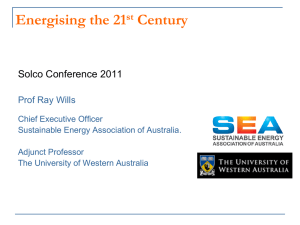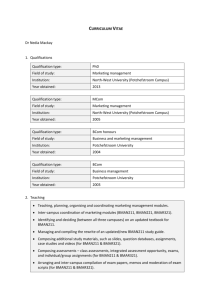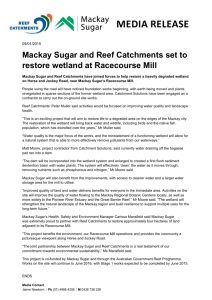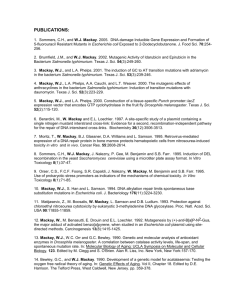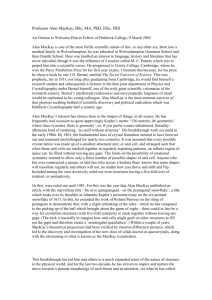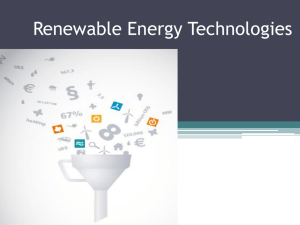Sustainable Energy
advertisement
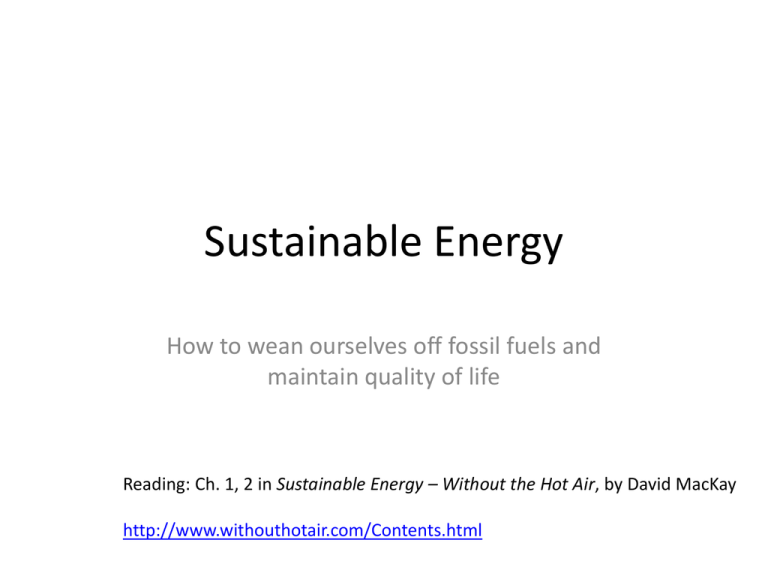
Sustainable Energy How to wean ourselves off fossil fuels and maintain quality of life Reading: Ch. 1, 2 in Sustainable Energy – Without the Hot Air, by David MacKay http://www.withouthotair.com/Contents.html Fossil fuel CO2 emissions: Burning buried sunshine Carbon emissions rising faster than estimates Global C emissions map Where emissions come from Atmospheric CO2:Last 50 years (2.0 ppm/year increase, or 0.5%) 391 ppm 1769: James Watt patents the steam engine Sustainable Energy – Without the Hot Air, by David MacKay How much is a gigaton (Gt)? • One billion metric tons (1012 kg) • It is about 2750 Empire State Buildings. • Global C02 emissions are about 32 Gt as of 2012. Carbon Emissions (year 2000) Global emissions are 32 Gt CO2 per year Per capita emissions: ~5.5 tons CO2 per year Sustainable Energy – Without the Hot Air, by David MacKay 74% emissions from “energy” rest is from agriculture, deforestation Sustainable Energy – Without the Hot Air, by David MacKay Energy and Power Energy is measured in kilowatt-hours (kWh) Example, a 40 Watt bulb left on all day (24 hours) is about 1000 Wh or 1 kWh Power is the rate of energy use, measured in kWh per day - Average European uses 125 kWh per day per person (total energy) - Average American uses 250 kWh per day per person. Energy sources US average = 250 kWh per day per person Energy uses Some Observations on US energy use 1) 2) 3) 4) We waste a lot of energy We use a lot of oil for getting around Natural gas is increasing Renewables are nowhere (for now) http://grist.org/climate-energy/2011-04-06-americas-energy-use-in-one-nifty-chart/ US energy use is diverse Can we live without fossil fuels? Wind • solar • hydro • wave • tidal • geothermal • nuclear Sustainable Unsustainable Energy use < renewable sources Energy use > renewable sources Sustainable energy components • • • • • • • • • Land wind turbines Offshore wind turbines Solar: Thermal and PV Biomass Hydroelectricity Wave energy Tidal energy Geothermal Nuclear Assumptions • This is only an exercise to see IF renewables can meet current total energy demand (not just electricity). • Book focuses on United Kingdom. • US per capita consumption is twice that of UK! • No attempt to HOW this can be done. MacKay did not address cost, social impact, community values, priorities WIND Solar Hydroelectricity Tidal and Wave Geothermal Theoretical vs. Practical renewable resource plans for UK Actual “plans” are quite modest and don’t meet demand Sustainable Energy – Without the Hot Air, by David MacKay …then there is social reality The NIMBY effect Hard choices to make Other people’s renewables… Desertec – ambitious plan to power Europe Any renewable energy plan must provide the energy you need • For the UK, the per capita energy draw is 125 kWh per day. • USA is DOUBLE this! • MacKay outlines 5 plans for 5 constituencies (Diversity, NIMBYs, Greens, Economically viable) Sustainable Energy – Without the Hot Air, by David MacKay Sustainable Energy – Without the Hot Air, by David MacKay A renewables plan that meets ALL of current UK energy needs Ballpark cost: $1.4 trillion Per capita cost: $22,000 Plan M Sustainable Energy – Without the Hot Air, by David MacKay Efficiency gains – the simplest, cheapest (partial) solution Infrastructure ideas: - Electrify Transport - Solar and heat pumps for hot water MacKay’s home efficiency gains Sustainable energy lessons • It’s hard to meet UK energy needs with renewables only, It’s doubly hard for US. • Any viable sustainable energy plan involves hard choices. • It’s expensive, but within the range of other major initiatives (wars, space program). • It quickly exposes waste and inefficiencies. • What’s lacking is not technology, but social and political will. Increasing renewable energy investment Some welcome good news ! • • • • • • Renewable investment and deployment are increasing. Costs are decreasing rapidly. Market penetration is high in some economies (Europe). Grid parity (with coal) is imminent. Once grid parity is achieved, renewables will increase. Decarbonized global economy is the (long-term) goal. Lots of room for growth ! Note LOG scale! Solar Grid Parity … http://cleantechnica.com/2014/10/29/solar-grid-parity-us-states-2016-says-deutsche-bank/ Market Penetration… Proportion of renewable energy (in %) http://cleantechnica.com/2014/10/29/solar-grid-parity-us-states-2016-says-deutsche-bank/ Levelized Cost of Energy (LCOE) calculation Accounts for: • Initial investment • Operations and maintenance • Cost of fuel • Cost of Capital • 20-40 year lifetime • No tax credits, incentives included = Average lifetime levelized electricity generation cost = Investment expenditures in the year t = Operations and maintenance expenditures in the year t = Fuel expenditures in the year t = Electricity generation in the year t = Discount rate = Life of the system Pro: Formally accounts for life cycle energy investment (but not envir. costs!) Con: Ignores cyclical (daily to seasonal) energy pricing fluctuations http://www.eia.gov/forecasts/aeo/er/early_elecgen.cfm LCOE – 2014 estimates http://www.greentechmedia.com/articles/read/3-signs-clean-tech-is-booming-in-2014


